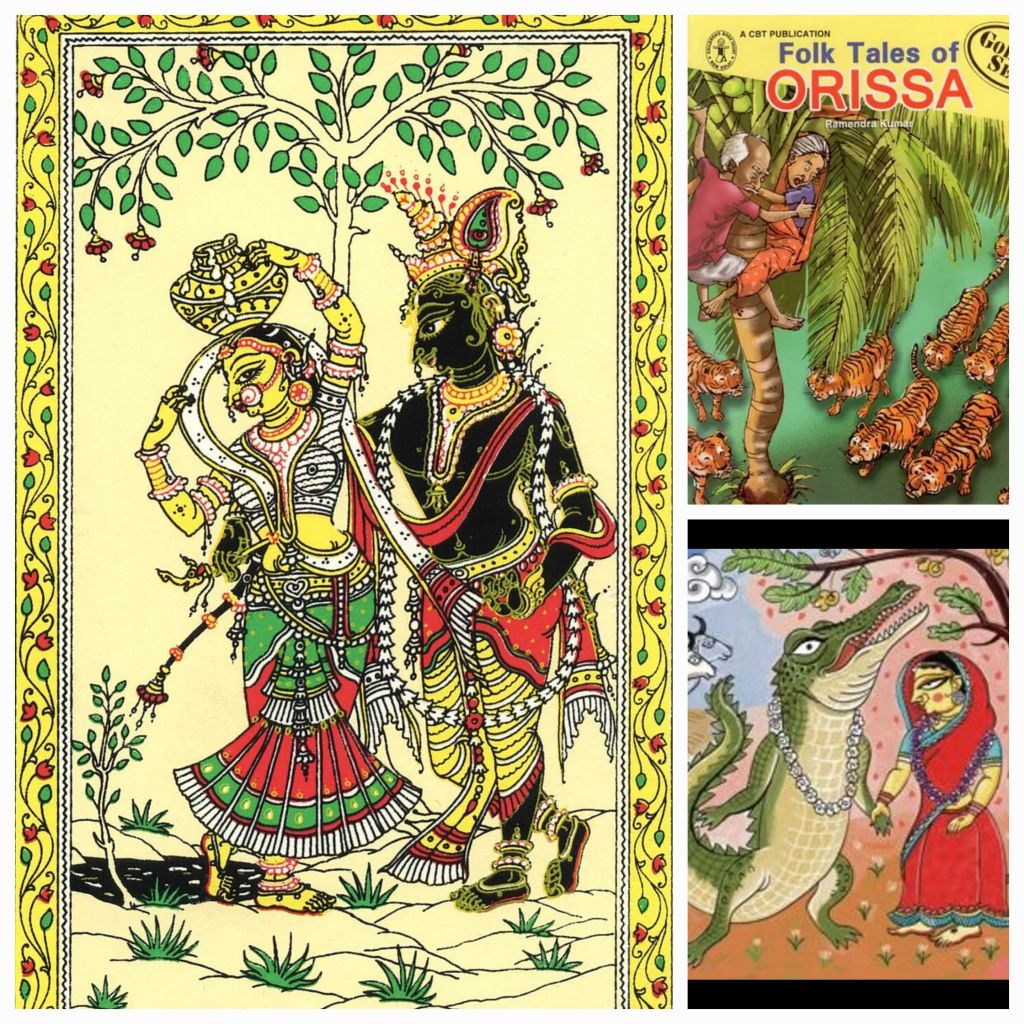Ancient Odia Folklore and Myths: A Tapestry of Cultural Heritage
The folklore and myths of Odisha form an integral part of India’s cultural mosaic, portraying a unique blend of historical narratives, spiritual beliefs, and cultural practices. This vast array of ancient tales not only entertains but also preserves the collective memory and moral framework of the region. In this exploration of Odia folklore and myths, we delve into the origins, characters, themes, and the impact these stories have had on both regional and broader Indian culture.
Origins of Odia Folklore
Odia folklore has its roots in the rural heartlands of Odisha, where storytelling is a cherished tradition. These stories have been passed down orally from one generation to another, making them a living part of community life. The origins can be traced back to the tribes of Odisha, such as the Santal and the Kondh, among others, who have contributed a rich variety of myths and legends to the Odia culture. These oral narratives were often told by the village elders or professional storytellers known as ‘Kathakaras’ during community gatherings.
Themes in Odia Folklore
The themes of Odia folklore are diverse, ranging from creation myths and heroic tales to moral stories and love sagas. Common themes include:
- Creation and Cosmology: Stories about how the world and various natural phenomena came into being. For example, the myth of ‘Bata Lokkhi’, which explains the origin of rice cultivation.
- Heroic Deeds: Tales of kings, warriors, and deities who protect the land and its people from evil forces. A popular example is the legend of ‘Kalia Dalana’, where Lord Krishna defeats the poisonous serpent Kalia.
- Moral Lessons: Folktales often carry moral teachings, such as the story of ‘Lachhman Rekha’, which teaches the importance of obeying one’s parents and the consequences of transgression.
- Love and Sacrifice: Romantic tales that also highlight themes of sacrifice, such as the story of ‘Tulasi’ and ‘Ganeswar’, which tells of undying love and the ultimate sacrifices made by lovers.
Collection and Preservation
Efforts to collect and preserve Odia folklore gained momentum during the British colonial period when scholars and missionaries took interest in the local culture. Notable figures include Fakir Mohan Senapati, who is often hailed as the father of modern Odia literature, and who made significant efforts to compile these stories in written form to keep them alive and do not extinct.
In recent times, organizations such as the Odisha Sahitya Akademi and various tribal associations have undertaken projects to document and promote Odia folklore through books, recordings, and digital archives. Additionally, universities and research institutions conduct studies and offer courses on tribal and folk literature, ensuring that these stories are kept alive and relevant.
Influence on Culture
Odia folklore has profoundly influenced the region’s culture, particularly its festivals, rituals, and daily practices. Many festivals, like Raja Parba and Nuakhai, are directly connected to agricultural myths and reflect the socio-economic backbone of Odisha. Similarly, Odia music, dance, and theatre performances often incorporate folklore themes, showcasing them to wider audiences.
Exploring the Rich Tapestry of Ancient Odia Folklore and Myths: A Cultural Heritage Study
Odissi music and dance, for instance, frequently draw from mythological themes and folk tales, enriching performances with narratives that resonate with local audiences. Puppetry and traditional plays like ‘Prahlada Nataka’ also keep these stories vibrant and integrate moral and ethical lessons from folklore into entertaining performances.
Challenges and Future Prospects
Despite robust efforts to preserve Odia folklore, challenges persist, including the diminishing number of storytellers and the overshadowing of oral traditions by modern entertainment forms. Additionally, the homogenization of culture due to globalization poses a threat to the unique cultural identity preserved in these stories.
However, there is hope in educational initiatives and technology. Schools in Odisha are increasingly incorporating local folklore into their curriculum. Moreover, digital storytelling and online archives provide new platforms for these ancient tales to reach global audiences, ensuring their preservation and continual relevance.

Conclusion
Ancient Odia folklore and myths are not merely relics of the past but are living narratives that continue to educate, entertain, and inspire. As we forge deeper connections between the past and the present through these stories, Odisha’s cultural heritage remains a vibrant and integral part of its identity, echoing the ancient wisdom of its people through generations.
#OdiaFolklore #OdishaCulture #Mythology #IndianHeritage #FolkTales #CulturalPreservation
I’m participating in #BlogchatterA2Z

Leave a comment